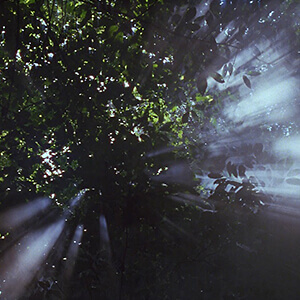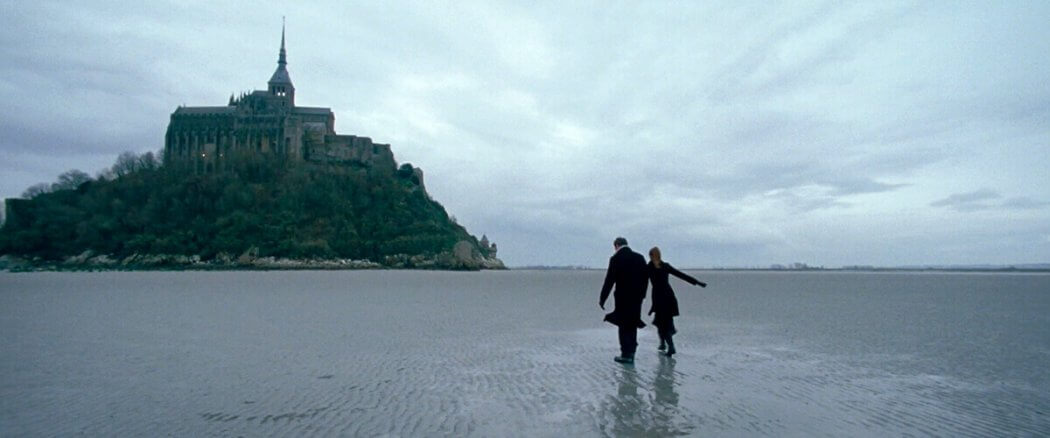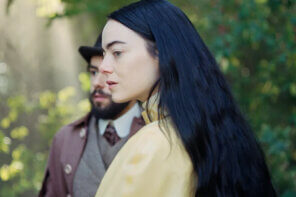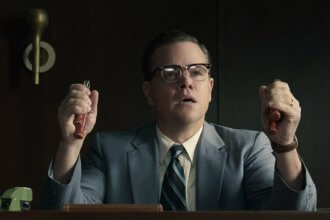Not that Terrence Malick needs a defense, but it seems that he has taken some heat from the forum of critics (including some of our own) as of late. This is understandable; Malick films tend to move against the grain of traditional narrative and shooting style. Anything we are unaccustomed to or unacquainted with, that moves against what “should” be tends to leave that odd aftertaste of displeasure. I believe, in this case especially, that sometimes our vision is what needs readjusting — a simple change in approach — in order to appreciate these differences as more than filmic or narrative incongruences, but as a furthering of the conversation of the purpose of story.
To set the tone — this is not a comprehensive essay, but an invitation to conversation; and not just of Malick, but of the role of film as a medium for teaching us about life, empathy, the eternal, and, as Hopkins states: a world charged with the Grandeur of God. I do not want to suggest that Malick be required watching of all people, but certainly of more, if, for nothing else, simply to have your mental boundaries pushed to grow.
How Are Stories Told?
Most of us are familiar with the basics of the plot arc — a protagonist is introduced and presented with a problem to overcome, the task becomes increasingly complicated (creating suspense) until the climax and resolution to the problem occur. Along the way the protagonists generally learn something about themselves (an internal change matches the external resolution and the external problem is shown to be a catalyst for the internal). This always looks different depending on genre — a tragedy’s climax is generally, well, tragic so the fatal flaw is not overcome so much as it contributes to fate.
 Understanding this is important when looking at Malick’s work (especially his most recent movies) because his films tend to a) shrink away from the external dilemma and dwell on the internal, and b) layer the Hero’s Journey deeply within the chaos of a real world. When we watch most movies we are able to synthesize the Hero’s Journey without thinking because it is so strongly built into the forefront of the plot. We can relate bits and pieces to our lives, but for the most part this becomes a fantasy in which we slip in to. Our real lives are harder to outline this way, and that is exactly what Malick is attempting to capture.
Understanding this is important when looking at Malick’s work (especially his most recent movies) because his films tend to a) shrink away from the external dilemma and dwell on the internal, and b) layer the Hero’s Journey deeply within the chaos of a real world. When we watch most movies we are able to synthesize the Hero’s Journey without thinking because it is so strongly built into the forefront of the plot. We can relate bits and pieces to our lives, but for the most part this becomes a fantasy in which we slip in to. Our real lives are harder to outline this way, and that is exactly what Malick is attempting to capture.
There is a meta quality to the way Malick’s stories unfold. The variations seem to play off of our learned knowledge of what a story ought to be and it sticks with us, irritates us sometimes. But he never lets us not think about what we just saw.
Should an Audience Work?
Inevitably Malick, like some of the other popular envelope pushers (think Lynch, Paul Thomas Anderson, Linklater, etc.) is bound to make you put in the mental sweat. Should an audience be burdened with this, or should we be able to just sit down after a long week and let the basic and familiar storyline unfold before us in an exciting and engaging way?
Why should we have to choose?
I cannot help but think about the conversation in The End of the Tour in which Lipsky and Wallace discuss the merits and limitations to good commercial entertainment whilst devouring candy and soda, and driving down a stretch of giant fast food signs lit up in the darkness of a Midwest Winter’s night. There is space for both work and rest in film, but I would argue that we overwhelmingly tend towards rest, towards unthinking absorption of image after image after image without a second thought of what we have just let pass through and into our soul.
Malick, and those like him, need to be praised and supported if for no other reason than this: we are pressed to dig deeper within our own selves whenever we come up against something requiring a greater level of mental effort.
This does not place Malick on a higher/more important plane of filmmaking, but simply on one which we do not balance our current appetite for the sugary sweet syrup of nearly everything else. If interested, listen to this DFW interview for some more perspective on this exact topic.
What Exactly Am I Watching Here?
Malick is notorious for his unique and non-traditional shooting styles, both in dropping the script from a film’s final cut (Jon and Tim share some good anecdotes in their podcast) and his camera work. Still, he manages to piece together movies that are reflective and thoughtful because of this. Next time you watch one of his films pay close attention to the intimacy he devotes to, well, everything.
 Malick’s worlds revel in seemingly insignificant moments: in Days of Heaven he captures candid shots of people with no presence in the main narrative, in The Thin Red Line there is a singularity to the unit, but a uniqueness granted each individual because he spends so much time in tight to the actors’ faces. I could go on and on with examples. In Knight of Cups, possibly the greatest cinematic interpretation of the book of Ecclesiastes, Malick does not glance over Ecclesiastes 5 to focus on the existential question we are so often fixated on, but instead he dwells on the faces and the voices of the poor and oppressed in the form of beggars and patients.
Malick’s worlds revel in seemingly insignificant moments: in Days of Heaven he captures candid shots of people with no presence in the main narrative, in The Thin Red Line there is a singularity to the unit, but a uniqueness granted each individual because he spends so much time in tight to the actors’ faces. I could go on and on with examples. In Knight of Cups, possibly the greatest cinematic interpretation of the book of Ecclesiastes, Malick does not glance over Ecclesiastes 5 to focus on the existential question we are so often fixated on, but instead he dwells on the faces and the voices of the poor and oppressed in the form of beggars and patients.
Still, it is not simply people he focuses the intimate lens on — he captures these unguarded moments of the beauty of nature in juxtaposition to man-made spectacles often portrayed in distant and cold shots. Malick also connects humanity to nature by shifting from close ups to a fixated natural image, generally an animal, or a plant sprouting up in an obscure location. He shows our smallness in the vast universe, and our connection to all things living and the creative force of God in us and these talismans.
The movement of his shots reinforces this. Malick loves handheld camera work that slowly follows the backs of his protagonists, and then pans upward and spins, leaving us dizzy and in awe of the world beyond our own singularity. The breaks are so abrupt and the shots filled with so much beauty it is hard to soak in all at once. These shots often coincide with the very nature of his characters — all of them searching for meaning in the world around them.
Film as Poem over Narrative
 In every way possible Malick creates poems in motion rather than strong narrative arcs. He dwells on the striking images that hold within themselves layers and layers of subtlety that speak to the situation at hand. Each scene seems to hold a rhythm that remains throughout a film. Rather than the typical ever quickening pace that leads to climax, Malick leaves us with a steady and strong cadence that ebbs and flows to place us in a world of reflective introspection and observation over satiated exhilaration.
In every way possible Malick creates poems in motion rather than strong narrative arcs. He dwells on the striking images that hold within themselves layers and layers of subtlety that speak to the situation at hand. Each scene seems to hold a rhythm that remains throughout a film. Rather than the typical ever quickening pace that leads to climax, Malick leaves us with a steady and strong cadence that ebbs and flows to place us in a world of reflective introspection and observation over satiated exhilaration.
I am not saying you need to start liking Malick movies if you already do not, but maybe valuing them more. As a director Malick is far and away one of the most thoughtful and explorational creators of the past several decades, possibly of all time. He does not do so in a shocking or jarring way, but in the simple and robust beauty of everydayness, of the smallness of life and its moments pieced together in extraordinary shot after extraordinary shot of the ordinary. Really, that is what a poet does — they encapsulate so much in the simple words and rhythms that any writer knows is anything but.





